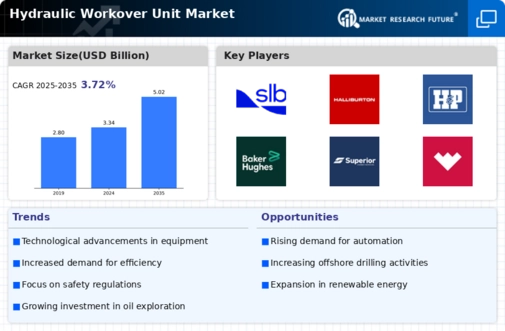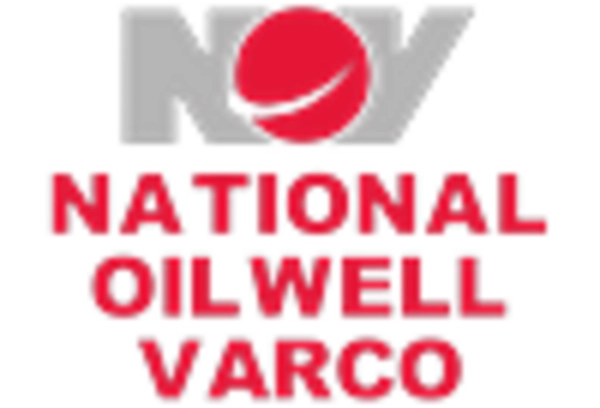Technological Innovations
Technological advancements play a pivotal role in shaping the Hydraulic Workover Unit Market. Innovations such as automated systems, real-time monitoring, and enhanced safety features are transforming the operational landscape. These advancements not only improve efficiency but also reduce operational risks associated with well interventions. For instance, the integration of advanced telemetry systems allows for better data collection and analysis, leading to informed decision-making. As companies increasingly adopt these technologies, the market is likely to witness a surge in demand for modern hydraulic workover units. The ongoing trend towards digitalization in the oil and gas sector further underscores the importance of technology in driving the Hydraulic Workover Unit Market forward.
Enhanced Safety Regulations
The Hydraulic Workover Unit Market is influenced by the implementation of enhanced safety regulations. As safety standards evolve, operators are increasingly required to adopt equipment that meets stringent safety criteria. Hydraulic workover units, known for their ability to perform well interventions with minimal risk, are becoming essential in this context. The introduction of new safety regulations is likely to drive demand for advanced hydraulic workover units that comply with these standards. Consequently, the Hydraulic Workover Unit Market is expected to grow as operators prioritize safety and invest in compliant technologies.
Growing Focus on Well Integrity
The emphasis on well integrity is becoming increasingly pronounced within the Hydraulic Workover Unit Market. As regulatory bodies enforce stricter guidelines regarding well maintenance and safety, operators are compelled to invest in hydraulic workover units that ensure compliance. This focus on integrity not only mitigates environmental risks but also enhances operational efficiency. Data indicates that companies prioritizing well integrity are likely to experience reduced downtime and lower operational costs. As a result, the Hydraulic Workover Unit Market is expected to benefit from this trend, as operators seek reliable solutions to maintain well integrity and adhere to regulatory standards.
Increased Demand for Oil and Gas
The Hydraulic Workover Unit Market is experiencing heightened demand due to the ongoing need for oil and gas extraction. As energy consumption continues to rise, operators are compelled to enhance production efficiency. This has led to an increased reliance on hydraulic workover units, which facilitate well maintenance and intervention. According to recent data, the oil and gas sector is projected to grow at a compound annual growth rate of approximately 3.5% over the next few years. This growth is likely to drive investments in hydraulic workover units, as companies seek to optimize their operations and extend the life of existing wells. Consequently, the Hydraulic Workover Unit Market is poised for expansion as operators prioritize efficient and cost-effective solutions.
Rising Investment in Exploration Activities
Investment in exploration activities is a significant driver for the Hydraulic Workover Unit Market. As companies seek to discover new reserves, the demand for hydraulic workover units is likely to increase. Exploration activities often require extensive well intervention, which hydraulic workover units are well-suited to provide. Recent statistics suggest that exploration budgets are on the rise, with many companies allocating a larger portion of their capital expenditures to this area. This trend indicates a robust future for the Hydraulic Workover Unit Market, as operators invest in the necessary equipment to support their exploration endeavors.


















Leave a Comment